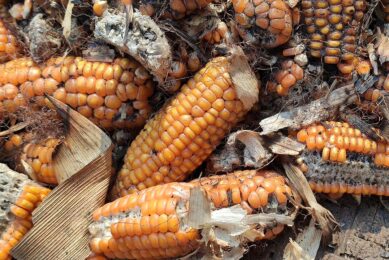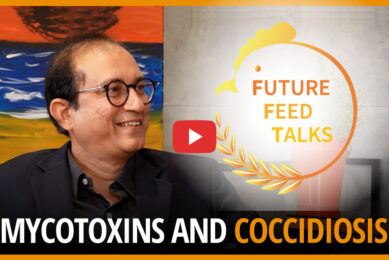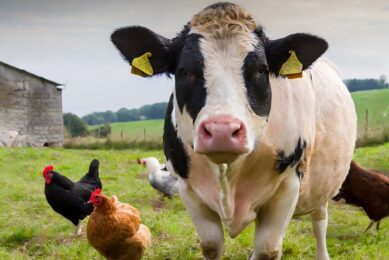Prof Gonzalo J. Diaz: “Chickens are less sensitive to aflatoxins”

Professor of Toxicology Gonzalo Diaz from the National University of Colombia gave a presentation during this year’s World Mycotoxin Forum, on how aflatoxin B1 impacts different poultry species. In this interview he gives more insight about his findings.
Your presentation at this year’s WMF is based on a series of studies you conducted on why the susceptibility to aflatoxin B1 is different among poultry species. Could you explain why you carried these studies out?
These studies were conducted to determine the cytosolic in vitro hepatic enzymatic kinetic parameters in four of the most important poultry species, chickens, turkeys, quail and ducks. The reason for carrying out these studies is that since the 1960s and 70s, it is well known that there are large differences in the sensitivity to aflatoxins in these species. Aflatoxins were discovered because they killed more than 100,000 turkey poults in the UK, in 1961. Ducks and pheasants were also killed but strangely enough no chickens. Studies were conducted after this event and the comparative toxicology studies showed that chickens are the most resistant species and duck are the most sensitive. We carried out these series of studies to look for an explanation.
What was the set-up for the studies?
We used the livers of the 4 species, separated the sexes because they respond very differently, and they have different metabolism capabilities. So, we used isolated enzymes from the hepatocytes, 4 different enzymes and we looked for possible differences in the metabolism of aflatoxin B1 carried out by those enzymes present in the liver. The reason for that is the aflatoxins that the poultry might have in their diet go to the liver first. When they eat toxicants, they are absorbed in the gut, they go through the portal system to the liver where they get processed first before they do damage elsewhere in the body, but as it happens, they damage the liver first.
What were the findings from the series of studies that you conducted?
The results from the whole series of studies showed that ducks produced large amounts of one metabolite that we have postulated is responsible for the acute toxic effects of aflatoxin B1. The name of this metabolite is aflatoxin B1 dehydrodiol, and it is produced through a series of reactions. The first one is mediated by the cytochrome P450 enzymes in the liver that forms an epoxide initially, but the epoxide is very unstable. It has a half-life of about one second only, so it transforms into a dehydrodiol upon reaction with water. The dehydrodiol is still a toxic metabolite that can damage and kill the cells. We established that ducks produce huge amounts of the dehydrodiol, whereas chickens produce very little amounts of it and the other two species somewhere in between. So, the amount of dehydrodiol produced in the liver or by the liver cells matched perfectly with the clinical observations that we saw when we tested for aflatoxins in this species. There were also more differences in more enzymes when the aflatoxin B1 is converted into the 8,9-epoxide, which is very unstable. It can also be detoxified by conjugating it with a molecule known as glutathione, making it non-toxic. We also found that the conjugation with glutathione was much more efficient in chickens than in ducks and the other two species. In another series of studies, we studied another metabolite that is not produced by cytochrome P450, but by another enzyme that is in the in the soluble part of the cell. The enzyme is called cytosolic reductase and produces aflatoxicol (an alcohol) from aflatoxin B1. This alcohol is non-toxic, so if the animal or in this case the bird produces aflatoxicol from aflatoxin B1, you’re not going to have any issues. We found that chickens are the largest producers of aflatoxicol and ducks the least. So, we found evidence from biochemical studies that the reason for this huge difference in sensitivity is due to biotransformation.
From these results, what practical tips could be passed on to a poultry farmer? Is there anything they could put into practice to protect the health of their flock?
The only practical result from these studies that farmers could take into consideration would be to realise that the quality control for feeds for sensitive species like ducks and turkeys must be very stringent. Chickens on the other hand, can tolerate large amounts of aflatoxin B1. In fact, we found that concentrations in a diet that would kill a dog, cat or a duck, actually increased the weight in broiler chickens. We found that there is a kind of dose response relationship known as hormesis. The lower doses studied caused an increase in the body weight and then after the dose or the concentrations was too high, let’s say about 1400 ppb in the diet, then we saw a minor effect on body weight. So, the practical approach would be if you need to use a commodity that has aflatoxins present, then use it in layer hens or broiler chickens. Avoid using them in turkeys or ducks as they will be severely affected.
Is there something in particular that you would like to focus your next research on?
Yes, I would like to continue the biochemistry studies on the metabolism of aflatoxin B1, it’s a very interesting topic to me. There are there are still some areas that need to be investigated for instance, conjugation reactions of aflatoxicol, how these molecules are transported outside the hepatocytes or inside the biliary canaliculi to be excreted in the bile and through the gut. The most important reactions have already been studied in our series of studies. The study series consists of 10 to 12 papers which have been published and focus only on the metabolism of aflatoxin B1 in the four mentioned poultry species.
“The hepatic metabolism of aflatoxin B1 explains the differences in susceptibility to the mycotoxin among major poultry species” is the title of the presentation given by Professor Diaz at the World Mycotoxin Forum. He has also published a book “ Toxicología de las micotoxinas y sus efectos en avicultura comercial” available to purchase in Spanish only.
 Beheer
Beheer






 WP Admin
WP Admin  Bewerk bericht
Bewerk bericht